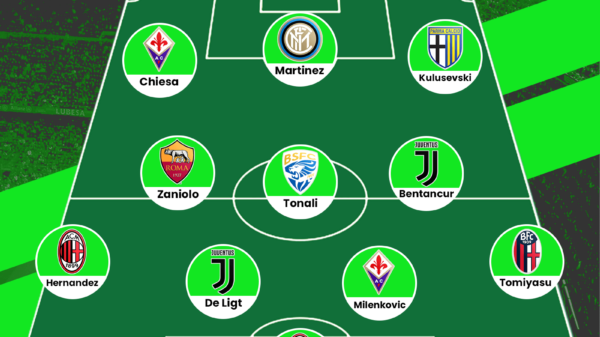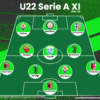Another amazing Champions League game night was graced by another amazing fixture between two giants of the continent, as Juventus visited the Santiago Bernabeu to play Real Madrid. This was an important game for the Old Lady, as they had drawn their opening 2 fixtures, and a negative result here could make the rest of the group hard work. Real Madrid, on the other hand, had a very different start. 10 goals in their first 2 games and all 6 points, Real came into this game in hot form, looking to probably seal progression.
Real Madrid started the game in a sort of 4-3-3 formation. Arbeloa, Pepe, Ramos and Marcelo began the game as the 4. In midfield, Khedira and Illara were the duo that were sitting in midfield, with Modric, playing a drifting role. Up front, Ronaldo started at home, on the left, Benzema in the middle, and Di Maria on the right.
Juventus started in a formation that they don’t usually use, the 4-3-3. The team usually lines up with 3 at the back, but Bonucci was left out this time, and Barzagli and Chiellini formed the central defensive partnership. Ogbonna began at left back, and Caceres at right back. The midfield trio remained the same, Pirlo, Pogba and Vidal. Marchisio was pushed up the pitch to occupy the right hand side of attack, while Tevez handled the left, and Llorente the middle.

via our very own Tactics Creator App. Click here to make your own!
Modric Role
Usually, Real opt for a 4-2-3-1, with someone like Isco playing as the middle component of the 3. Modric too, has taken up that role at times, though one wouldn’t call it his natural position. Today however, Ancelotti gave Modric the license to drift around the pitch. The Croatian play-maker added a lot of vertical movement across the park, generally staying close to the ball, and on or close to the same horizontal line as the ball. The aim was to utilise the play-making of Modric across the pitch, and the Juve midfield trio meant that anyone trying to operate in the non-existent ‘hole’ could be neutralised. It was also a necessity to try and drag the Juve midfielders out of position. The diminutive medio had by far the highest number of touches of the ball from anyone on his team, with 118.
Football Blogging Awards: Click here and vote for us in the “Best New Football Blog” Category
Juventus Drawing Real Out
Conte came in with a counter attacking game plan. His aim was to use the wide areas to attack, and in order to do so effectively, they needed to draw the Los Blancos out of their half. They did this by using two main tactics. Firstly, there was hardly any pressure on the ball from Juventus, especially in the Real Madrid half. The pressure came of course, but only when the ball entered the Juventus half of the field.

Juventus Tackles.
via squawka.com
Another move we saw from Juventus throughout the game was their pattern from goal kicks. every time they won one, they were insistent on passing out to defenders and playing out from the back. Of course, the aim was to bring the Real front men forward, and increase the gap between the forwards and the midfield, opening space for Pirlo to operate in. There were quite a few long passes also played to exploit the space created as a result of the Real pressing.
Juventus Trying To Cross
Conte probably identified a weakness of the Real Madrid back-line when it came to dealing with crosses and cut backs. The Old Lady was ruthless in trying to exploit the failings of Marcelo and Arbeloa. Over the course of the game, Juventus managed to make 17 cross attempts, and of these, 14 came in the first 45 minutes, when both teams had 11 men on the pitch. They did so in a systematic manner, with different types of set ups leading to the ball into the box.

Juventus Crosses
via squawka.com
For the crosses that came from open play, most were aimed at the back post, with the intention of getting one of their players competing for an aerial ball with the opposition full back. In order to get the man on the ball space, the use of dummy runners was employed on some occasions. The full backs generally served as dummy runners, and the ploy was used only when the midfielders who were in wide areas had the ball. When the full backs were on it, they tried to cross the ball early and from deep positions. From corner kicks, the ball to the far post was abandoned, and Juventus tried to fire the ball across goal, mainly looking for someone at the near post.
Overloading Tactic
Playing in an unfamiliar formation, Juventus retained one main principle of the 3-5-2, and that was to keep overloads in the central area of the pitch. Of course, the problem for Conte arose naturally when he tried to accomplish this, but attack Madrid from the flanks with crosses. To solve thhe conundrum, the movement of players was used. When Juventus had the ball on the left side of the pitch, for example, the left sided midfielder, Pogba, shifted out onto the wing. This meant that along with Ogbonna, was also present, ensuring that the wing was occupied by 2 players. Tevez, who was out on the left while defending, cut into the middle enough to become the supporting striker to Llorente. On the other side, instead of staying wide, Marchisio cut inside significantly enough to be labelled a central midfielder. This meant that Juventus still had 3 (Pirlo, Marchisio, Vidal) in the middle of the park, and had a double advantage on the wing. When the ball was shifted over to the right hand side, the same routine was repeated, with the roles being reversed, and Caceres serving as the full back pushing forward.

via our very own Tactics Creator App. Click here to make your own!
Shape And Plan After Red Card
Giorgio Chiellini really let his team down on the night, getting sent off after conceding a silly penalty kick. This left Juventus with a considerable challenge. Once the red card was handed out to the Italian, Juventus shifted their shape to a 4-4-1, Tevez playing as the lone striker. Llorente, and soon Pirlo too were taken off. The rationale behind these moves was to remove the players whose work rate wasn’t as high as necessary when playing with 10 men. Pogba moved to the right, and Marchisio and Vidal covered the centre, as the substitute Kwadwo Asamoah came on to patrol the left flank. Later on, Asamoah shifted into left back, as Juventus moved to a 4-3-1-1. The central midfield trio sat in front of the defence, and Giovinco played centrally, to provide attacking thrust alongside Carlos Tevez.
The plan from Conte was to see out the first 15 or so minutes without incident, to allow Juventus to settle to the pattern of the game, and not let it fly away from them, as a goal from Real could have finished the game right there. After this period, the team began to attack more, as Real also began to tire, and let their concentration down. A number of the Juventus attacks came from Real carelessly giving the ball away to them.
Conclusion
Juventus came into the game with a strong plan of how to go about it, and carried it out well too. They were let down by a couple of moments of poor decision making. Real on the other hand made slight tweaks to their usual game, and rode the brilliance of Ronaldo. Ancelotti has every reason to be disappointed with the performance his team put in, but will be very pleased with the result they came out with, as the Los Blancos have virtually sealed their place in the next round with 9 points out of 9.
Over to you! That was our analysis the clash, was there anything particular that you (tactically) noticed? Let us know by dropping a comment below.
Make sure you follow us on Twitter @OOTB_football and like us on Facebook. We’re on Google+ and Tumblr as well for those interested.
CLICK HERE TO READ OUR OTHER TACTICAL ANALYSES
- Analysis: Are Chelsea’s pressing issues a concern? - October 5, 2020
- Has Financial Fair Play Been Worth It? - August 27, 2020
- Tactical Philosophy: Frank Lampard - May 20, 2020

























































